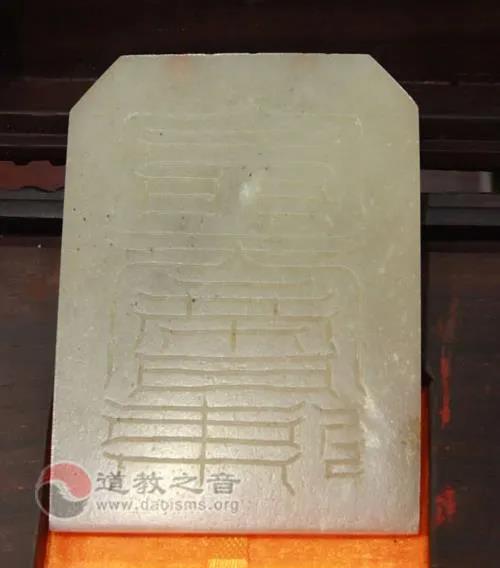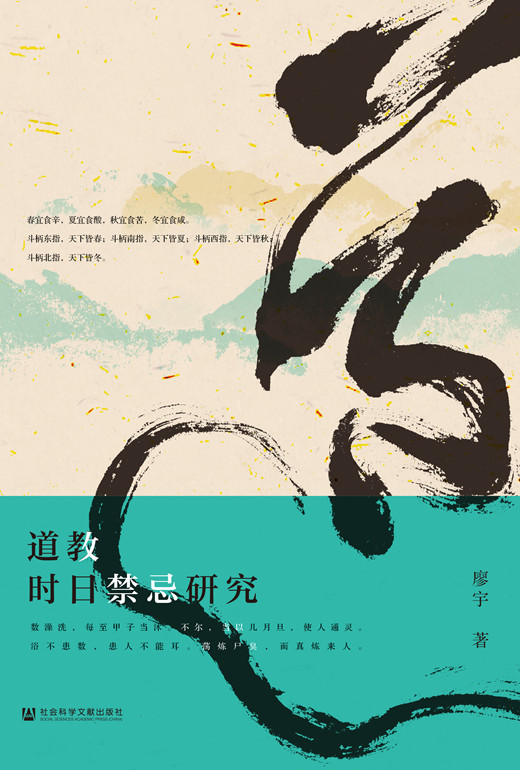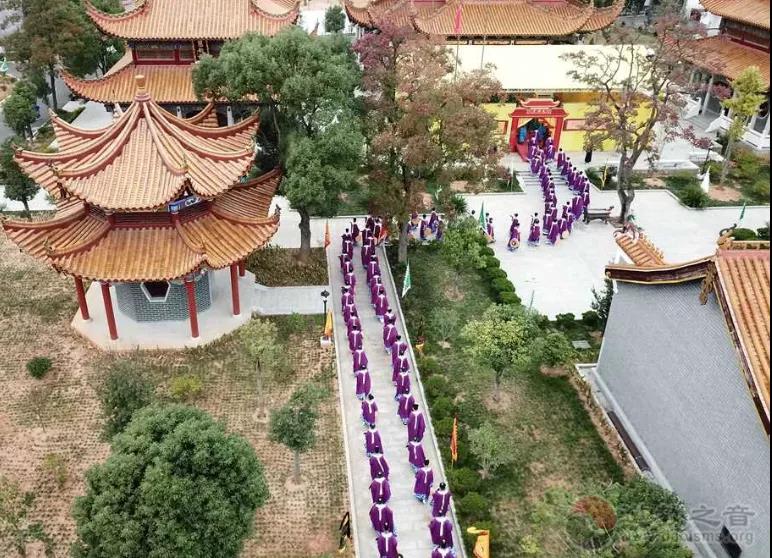Sub-topic: Piety, Loyalty, and Integrity: Ethics and Morals
10-12 May 2017
Wudang Mountain, Shiyan City, China
Old and new put their stamp on everything in Nature. The snowflake that is now falling is marked by both. The present moment gives the motion and the color of the flake, Antiquity its form and properties. All things wear a lustre which is the gift of the present, and a tarnish of time.
Ralph Waldo Emerson (1904)
In Southeast Asia, many Chinese display three statues in their homes, representing three forms of success in life: wealth, high status, and long life. Although they may aspire to all three, they know that success or failure is not always certain. Despite their best efforts to achieve, people lose money, fail exams, get in accidents, get ill, and break engagements. (DeBernardi 2006: 78).
Daoism offers readers philosophical and moral classics like the Daodejing and the Taishang Ganying Pian (DeBernardi 2009). But for many devotees, Daoism also offers them shared understandings and everyday practices of the sort that Bourdieu termed a habitus, or system of tendencies that organize the way individuals perceive their lives and make choices (Bourdieu 1990: 56). One practical application of Daoist philosophical ideas of moral cause-and-effect and change is found in the habitus of divination. Ordinary individuals turn to divination seeking help as they make difficult life decisions. In Daoist temples they receive texts that recall the past, providing them with poetic images and exemplary stories that they imaginatively apply to their lives and situations.
In my book The Way that Lives in the Heart (2006) I explore the everyday practices of Chinese popular religion in Penang, Malaysia. When faced with setbacks in life or the responsibility of making important decisions, Penang Chinese often visit the temples of the Goddess of Mercy to do divination with bamboo strips. People pray to the god in the temple, framing a question in their minds while shaking numbered sticks from a bamboo tube. Once one has fallen out, they confirm that it is correct by throwing divination crescents. If they receive three affirmative responses, they take a written oracle from the temple attendant, who helps them to interpret the oracle in light of their question.
When they seek answers through divination, they continue a practice that is as old as Chinese culture itself. After the Daodejing, the Yijing is one of the most translated and appreciated books of Daoism. Chinese scholars do not agree on its main purpose and have described it as a divination manual, a book of philosophy, or an early scientific study. As Yijing enthusiast Steve Moore stated, if the importance of a book is measured in the number of readers, the amount of commentary on them, the number of editions and translations, and its influence "across the centuries and the continents" then the Yijing and the Bible would stand out as two of the world's most important works (Moore 2002: xiii). Although it might not be studied or consulted as frequently as it was before China modernized its education system, the Yijing still is the focus of scholarly and historical study in modern China.
For English speakers, the most popular translation is the 1923 translation by Richard Wilhelm that was translated into English by Cary Baynes in 1950, which Amazon.com's website identifies as a "No. 1 Bestseller." But every year there are new translations and editions, including scholarly translations like Richard Lynn's The Classic of Changes: I Ching and popular books like the I Ching for Beginners (1996), which has comic book-style illustrations. These books introduce the Yijing to Westerners who have no background, and include explanations of the trigrams and hexagrams and instructions on how to use the book as an oracle.
Soon after Lynn's translation was published, the University of Columbia Press also produced and sold a CD-Rom version of the Yijing that could be used for divination on the buyer's personal computer. At the time this was unique; today many websites exist that individuals can use to consult the Yijing as an oracle. But traditionally, the readers of English translations used coins to obtain the answer to their questions. Once the person had confirmed which of the Yijing's 64 hexagrams was the answer to their question they would read it in light of their concerns. Each hexagrams has a name and a fan of associations that can be applied to the asker's circumstance. Like many aspects of culture, the hexagram is ancient but it takes on a new meaning when the individual reading it gives it the "motion and color" of the present (Emerson 1904).
In a recent book entitled I Ching: Biography of a Book (2012) Richard J. Smith explores the global impact of the book and its influence on Western culture. As is well-known, Swiss psychiatrist Karl Jung thought that the Yijing confirmed his ideas about symbolic archetypes and synchronicity. The notion of archetypes proposes that all human beings share certain symbols and images that appear again and again in our art, stories, and dreams. These rest in our unconscious minds, and inform our imagination. Synchronicity is the mystical notion that nothing ever happens by chance, and that every event is somehow connected with an individual's unique concerns.
We can see the implication for divination: we can read the Yijing hexagrams and appreciate its recurrent symbols, which relate to elemental forces of nature: heaven and earth, lakes and mountains, thunder and wind, rocks and trees, fruits, vines, flowers and animals of all kinds (Smith 2012: 38). The person who asks a question completes the meaning of the image and the hexagram in light of their own creative ability to find meaning and relevance in the oracle (Faber 1998: 21; Smith 2012: 198).
Many Western artists have used the Yijing in their creative process, and Smith has reviewed the work of writers who draw on the Yijing's symbolism in their fictional writing, or use it to make choices about the story they are telling (Smith 2012: 199-204). Musicians also used it in their work. In 1951, for example, American musician John Cage wrote a piano solo called "Music of Changes." He consulted the I Ching as he composed this piece, and produced what he called "indeterminate music." As he described it, he used the Book of Changes "as a discipline, in order to free my work from my memory and my likes and dislikes" (Smith 2012: 206). The oracle rather than his own experience and musical training determined the musical score, which was more chaotic than patterned (Covell 2006).
The Book of Changes also provides readers with a rich fund of images that are relatable across linguistic and cultural boundaries. These too have had transnational impact, including in Canada. A few years ago, when I was passing through the Vancouver airport, I discovered greeting cards for sale that were identified with the Yijing hexagrams. Each card offered a photographic image of the Canadian landscape, its mountains, rivers, lakes, and fields, together with a hexagram's name. On the back of the card, was a short explication of the hexagram's meaning. To give one example, the photographer chose the image of a lightning striking over the Straits of Georgia in British Columbia to represent hexagram 1 Qian--the creative force. He chose a photograph of the moon and the planet Venus to represent "The return," an astral image of change. The cards formed a series called "Visible Changes," and the company that produces them, Pendragon Prints, has sold over a million of these cards.
The owner of Pendragon Prints, Terry McTavish, is a Canadian photographer who explains on the company website that the Yijing changed his life. McTavish grew up on a farm in Northern British Columbia but moved to a busy city for work. He found his life too hectic and consulted the Yijing. The throw of the coins led him to a hexagram (probably number 22 "Grace") that he interpreted to mean that he should sell his vehicle and walk. He sold his truck and walked and hitchhiked across Canada, including visiting Canada's National Parks on foot. He later became a nature photographer, but remained deeply interested in the Yijing, and bought every new translation. When he began to use his photographs to make greeting cards, he consulted the Yijing to help name the images.
On his website McTavish comments that people whom he meets from China seem less aware of the Yijing than people in the West. But the Yijing is not the only divinatory text and many Chinese know divination texts that are unknown in the West. These divination texts resemble the Yijing in offering poetic images and they are consulted in similar ways, but they are written in connection with devotion to particular deities. I have collected a number of sets of divination oracles in temples in Singapore, Malaysia, Taiwan, and China.
Wudang Mountains Xixiaogong also offered Xuantian Shangdi oracles that devotees obtained through shaking bamboo sticks to obtain one of 49 numbered charms. When I requested them for my research, the nuns shared 29 of these with me; today the full set of 49 are available on the Internet on a website based in Fuzhou, Fujian. This website includes numerous forms of divination, including a page with link to sets of oracles identified with specific deities, including Guanyin, Mazu, Lu Dongbin, and Xuantian Shangdi. After picking a deity, the devotee may seek answers to questions by a random computerized process of selecting a number, then throwing divining crescents to confirm that it is correct.
Some anthropologists have observed that devotees view the gods as parental figures: Jung would say, an archetypal mother or father. Although both are described as virgins, Mazu and Guanyin are both nurturant maternal figures. Xuantian Shangdi is a powerful protector, represented as a demon-expelling general with a sword, standing on his emblems the tortoise and the snake which symbolize his transcendant power to overcome his physical nature. His story Journey to the North (Beiyouji) endows temple sites and Wudang mountain's landscape with meaning (Lagerwey 1987; Seaman 1987). Probably most people who visit the temples at Wudangshan have not read the vernacular novel. Nonetheless, his devotees are many, especially in Fujian, Taiwan, and Southeast Asia but also in Hubei, where he is called Zushigong.
In 2004, Zixiao Gong offered a set of 49 Xuantian Shangdi Ganying Lingqian oracles printed on yellow tissue paper. Each oracle consists of a number, an assessment of how auspicious, neutral, or negative the charm was, a title, eight categories of topic accompanied with a four line jueju poem, then finally an explication. The title and the first line typically provide a poetic image: a flying dragon, a tiger emerging from the woods, a round bright moon, a crane singing in the sky. The second line offers a plan and prediction. Subsequent lines identify more specific concerns: home, marriage, lost items, official matters, travels, and illness.
Many of the oracles offer images of unparalleled success, imagined in the imagery of imperial China and its official bureaucracy. Take, for example, the thirty-fifth oracle or sign:
Xuantian Shangdi's Efficacious Signs
The 35th Sign: Big Fortune A Crane Singing in the Ninth Heaven
The God's Will
A crane sings, and its passionate voice fills the universe
The journey of ninety thousand li feels as short as one footstep
Every day your official rank rises and your wealth and fortune grows
Life passes by with peace, luck and celebrations
Plan and Prediction
For years under the pinetrees you cherish feathers/beauty
And are unwilling to bow your head to the rich
Now that you strive to rise above all
And have learned that aspiration and dignity are higher than sky
玄天上帝灵签 第35签 鹤鸣九霄(大吉)
圣意:鹤鸣霄汉气冲天、九万程途咫尺间、官位日升财禄进、安居吉庆度时年。
谋望:几年松下惜翎毛、不肯低头谒富豪、今日奋身腾碧汉、才知志气比天高。
The thirty-fifth sign imagines success in light of images of vastness including a journey that at 30,000 miles is longer that the circumference of the earth but feels as short as a single footstep. Perhaps this vast road that is so easily crossed is in fact the dao. Although the sign predicts official and worldly success, the prediction also points to the aspiration to be close to nature and to rise above social distinctions, pointing the devotee towards seeking otherworldly achievements.
The fifteenth sign also imagines great success, but in light of a different symbol, that of the full moon and a starlit sky reflected on the sea. This sign is even more auspicious that number 35:
Xuantian Shangdi's Efficacious Signs
The 15th Sign: Best of the Best A Round Bright Moon
The Divine’s Will:
The full moon shines tonight over the sea edge
People now look and admire the beauty of the black sky
The stars are bright and scatter all over
Those of a noble character will win official positions with careful planning
Plan and Prediction
Embarking on a journey leads to meeting with friends and inviting over dignitaries
Do not complain about the long distance of the journey far beyond heaven
You get whatever you plan to get here on a flat land
Beyond the clouds you have a heavenly ladder as a bridge assisting you to pass over the river
玄天上帝灵签 第15签 一轮明月(上上)
圣意:月满今霄离海边、时人感仰丽青天、清光烁处群星散、君子营谋便得官。
谋望:此去相逢贵客邀、莫嗟天外路迢遥、平地任汝营求意、云有天梯渡水桥
In the 15th sign, the oracle predicts that if a person has noble character and plans carefully, he will be successful in his aspirations. But the prediction also suggests that the person will eventually make a journey through heaven with divine assistance. Thus this sign also has a duplex nature, promising worldly success but also urging the asker to think about their character and their decisions, as well as the eventual journey of their soul.
I present these translations as poems, but if a person had drawn one of these as the answer to their question, they likely would have shared the question with the person who gave them the lot. The individual may share their indecision, fear, and uncertainty about the unknown, including the future, sometimes with a stranger, sometimes with someone at a community temple who is known to them (2011: 96). In response, the interpreter explains the poetic lines' meaning in light of the individual seeker's circumstances and concerns and also the timing of their request (DeBernardi 2006: 68-73; Hatfield 2002: 865). Thus connected with the individual's life, the divinatory poem becomes a mirror of the person's soul.
Conclusion
In this paper, I have explored the popular practice of temple divination, which continues the tradition of Yijing divination in temples but now also on the Internet. Although the settings may be novel, the images in the oracles translated here--the vast sky, the moon and stars, the path and river, are as ancient as the Yijing. Apparently human aspirations also have not changed much. People now consult Xuantian Shangdi's qian on a website offering many options, but they are still seeking career success and prosperity, peace and luck. Every generation experiences the world and society as new, but the Yijing and Xuantian Shangdi's oracles remind us as philosopher Ralph Waldo Emerson observed that "All things wear a lustre which is the gift of the present, and a tarnish of time."
Bibliography
Bourdieu, Pierre. 1990. The Logic of Practice, translated by Richard Nice. Stanford: Stanford University Press.
Chuang Rueyling. 2011. "Divination/Fortune Telling (Zhan Bu/Xianming): Chinese Cultural Praxis and Worldview." China Media Research 7(4): 93-103.
Covell, Grant Chu. 2006. "1951 and Cage's Music of Changes." La Folia April 2006. http://www.lafolia.com/1951-and-cages-music-of-changes/ Consulted 13 March 2017.
DeBernardi, Jean. 2006. The Way that Lives in the Heart: Chinese Popular Religion and Spirit Mediums in Penang, Malaysia. Stanford: Stanford University Press.
--------. 2009. "'Ascend to Heaven and Stand on a Cloud': Daoist Teachings and Practice at Penang's Taishang Laojun Temple." In The People and the Dao: New Studies of Chinese Religions in Honour of Prof. Daniel L. Overmyer. Edited by Philip Clart and Paul Crowe, pp. 143-184. Sankt Augustin: Institut Monumenta Serica.
Emerson, Ralph Waldo. 1904. Chapter VI. "Quotation and Originality." The Complete Works. http://www.bartleby.com/90/0806.html.
Faber, M. D. 1998. Synchronicity: C. G. Jung, Psychoanalysis and Religion. New York: Praeger.
Hatfield, D. J. 2002. "Fate in the Narrativity and Experience of Selfhood." American Ethnologist 29(4): 857-877.
Lagerwey, John. 1987. “The Pilgrimage to Wu-tang Shan,” in Pilgrims and Sacred Sites in China, edited by Susan Naquin and Chun-fang Yu, pp. 293-332. Berkeley: University of California Press.
Lynn, Richard John. 1994. The Classic of Changes a New Translation of the I Ching as Interpreted by Wang Bi. New York: Columbia University Press.
Moore, Steve. 2002. "The I Ching in Time and Space," in I Ching: An Annotated Bibliography, edited by Edward Hacker, Steve Moore, and Lorraine Patsco, pp. xiii-xv. New York and London: Routledge.
Seaman, Gary. 1987. Journey to the North: An Ethnohistorical Analysis and Annotated Translation of the Chinese Folk Novel "Pei-yu Chi." Berkeley: University of California Press.
Smith, Richard J. 2012. The I Ching: A Biography. Princeton: Princeton University Press.
Toropov, Brandon. 1996. The I Ching for Beginners. Illustrated by John Kane. New York: Writers and Readers Publishing Inc.
Wilhelm, Richard, translator. 1967 [1950]. The I Ching or Book of Changes, rendered into English by Cary F. Baynes. Third edition. Princeton: Princeton University Press.
(原文来源于孝忠诚信与伦理道德分论坛发言稿)

流泪
0人

鼓掌
0人

愤怒
0人

无语
0人

欢迎投稿:
Email:server#daoisms.com.cn(注:发邮件时请将#改为@)
免责声明:
1、“江南app下载-官方网站 ”所载的文、图、音视频等稿件均出于为公众传播江南娱乐在线登录账号 文化之目的,并不意味着赞同其观点或证实其内容的真实性,我们不对其科学性、严肃性等作任何形式的保证。如其他媒体、网络或个人从本网下载使用须自负版权等法律责任。
2、本网站内凡注明“来源:江南app下载-官方网站 ”的所有文字、图片和音视频稿件均属本网站原创内容,版权均属“江南app下载-官方网站 网站”所有,任何经营性媒体、书刊、杂志、网站或个人未经本站协议授权不得转载、链接、转贴或以其他方式复制发表。已经本网协议授权的媒体、网站,在下载使用时必须注明“来源:江南app下载-官方网站 ”, 违者将依法追究责任。
3、凡本站转载的所有的文章、图片、音频、视频文件等资料的版权归版权所有人所有,本站采用的非本站原创文章及图片等内容均标注来源,由于无法一一和版权者联系,如果所选内容的文章作者认为其作品不宜上网供大家浏览,请及时用电子邮件或电话通知我们,以便迅速采取适当措施。

苏州江南娱乐在线登录账号 姑苏仙乐团在上海世博会上演出 江南娱乐在线登录账号 音乐是伴随江南娱乐在线登录账号 产生、发展而逐渐形成的,是江南娱乐在线登录账号 文化的重要组成部分...[详细]

图注:茅山四宝之玉符 读道经时,很多对天尊的描述,前面都会加上一些对环境、功德、品格等方面的描述语,如高...[详细]

建除术是中国古代的一种选择方术。建除术在秦汉时期颇为流行,《史记日者列传》有建除家,可见西汉时期,建除...[详细]

在《道德经》中有一个非常著名且非常关键的比喻,源于经文的第五章,其曰:天地之间,其犹橐龠乎?虚而不屈,...[详细]

2021年8月25日宝鸡市老子文化研究会会长易渲承邀我参加磻溪宫邱处机版《道德经》经幢的校勘活动。除观看校勘人员...[详细]